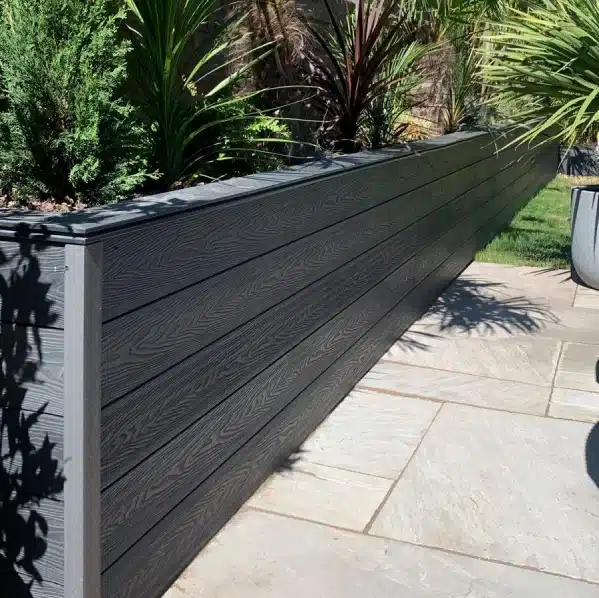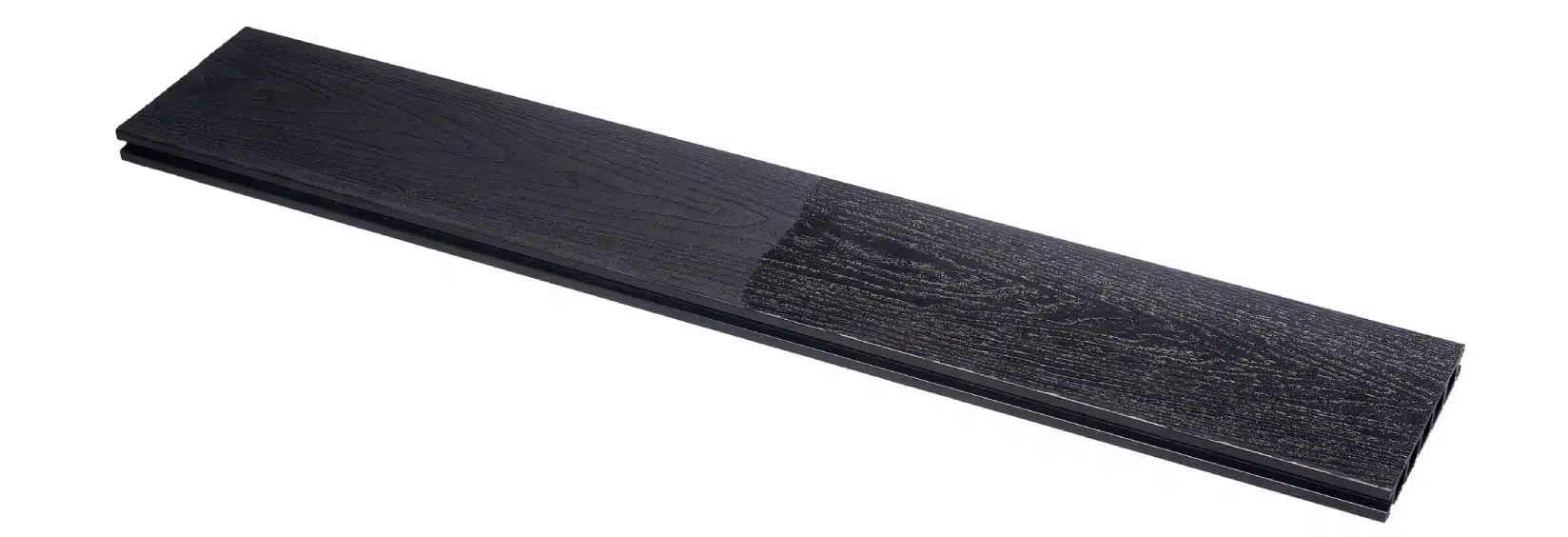How to Build a Raised Garden Bed With Composite Decking
Decking your garden is a way to make your outdoor area more appealing. Gardens come in various shapes; some are flat, but others might be uneven or sloped. If your garden is sloping, you can still create beautiful decking designs. The great thing about decking is that you can build it on any outdoor surface. Whether it is a garden slope upward or downward, there are different decking ideas you can implement.
In the UK, slopes and hillside gardens are quite common. Installing decking can be tricky in these terrains. Fortunately, you have several options. Here are a few ideas that you can try if you are planning to build decking in your sloping garden.
Elevated Decking
For sloping grounds, one of the decking solutions is by building an elevated deck. Elevated decking makes use of well-designed stairs and railings. With proper planning, you can increase your property’s kerb appeal and make use of your sloping garden space. This option is best for hillsides and higher slopes.
Since elevated decking are often high, you will need to prioritise safety and structural integrity. Always follow the guidelines, especially when it comes to designing the stairs and the railings. In some cases, you may also need to get planning permission from your local planning authority. With an elevated deck, you can transform the space below the decking for any purpose. You can convert it into a storage area, build a garden, or turn it into another living space.
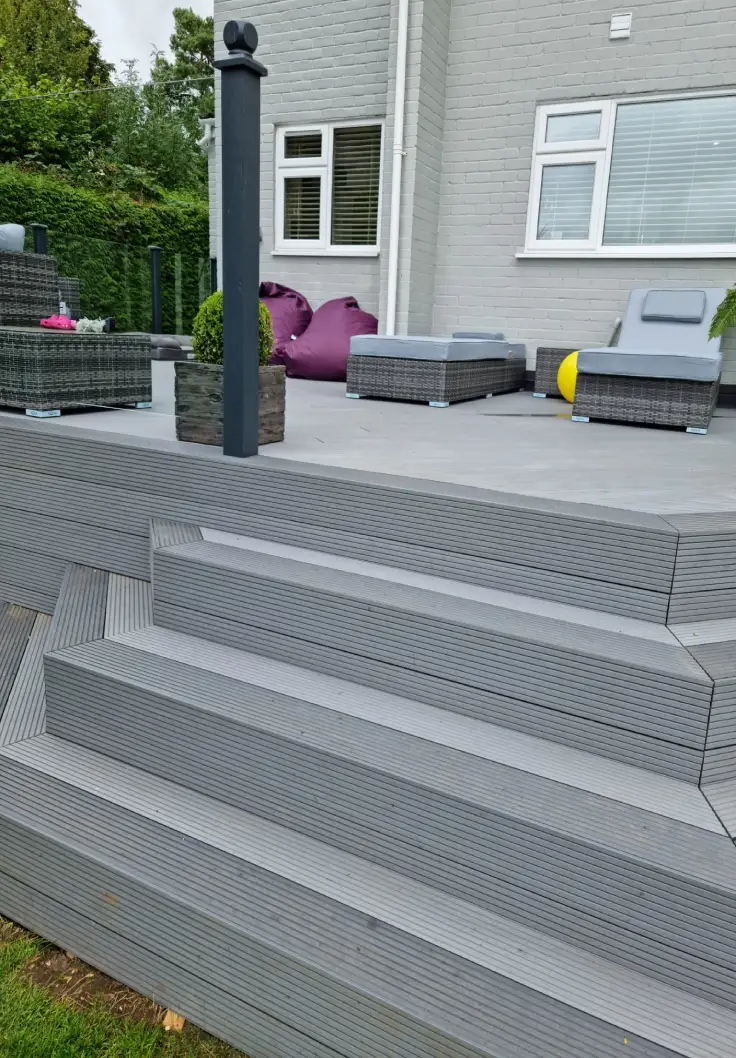
Multi-Level Decking
Similar to elevated decks, you can also go for multi-level decks. The difference between multi-level decking and elevated decking is that the former creates multiple levels instead of just one for the latter. If you have a large space to work with, you can make the most of it by sectioning each area for different purposes. You can use one level as a dining area and the other for relaxation.
Multi-level decking requires extensive planning, often more so than elevated decks. As with elevated decking, you will also need to pay attention to safety. You’ll have to follow the local guidelines and requirements for building decks.
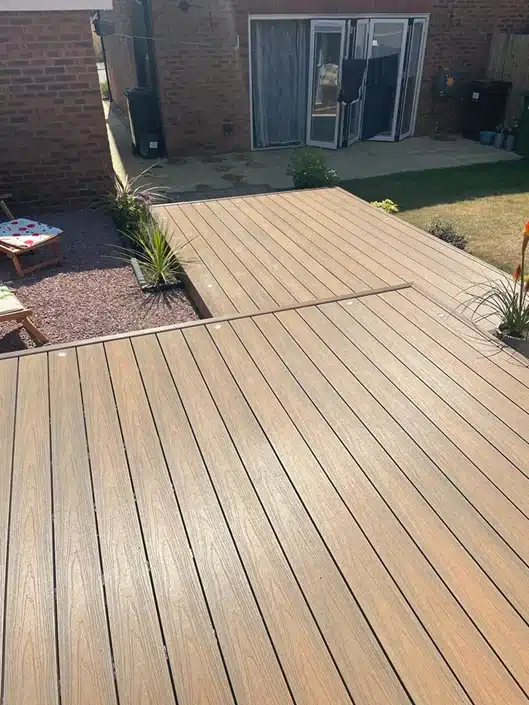
Tiered Decking
Another option that you can choose for sloping gardens is by installing tiered decking. Tiered decking is similar to multi-level and elevated decks. Tiered decking uses multiple steps to frame the landscape. For this reason, there is not much space below the deck. This option works well with gentler slopes.
Like multi-level and elevated decks, tiered decking is an efficient use of space. It can transform the slope into a beautiful area. As with the other options, you can section the deck, each for a different function. Since most of the way to the top of the slope will be level, you can also add other structures along the way, such as sheds, pergolas, gardens, and gazebos.
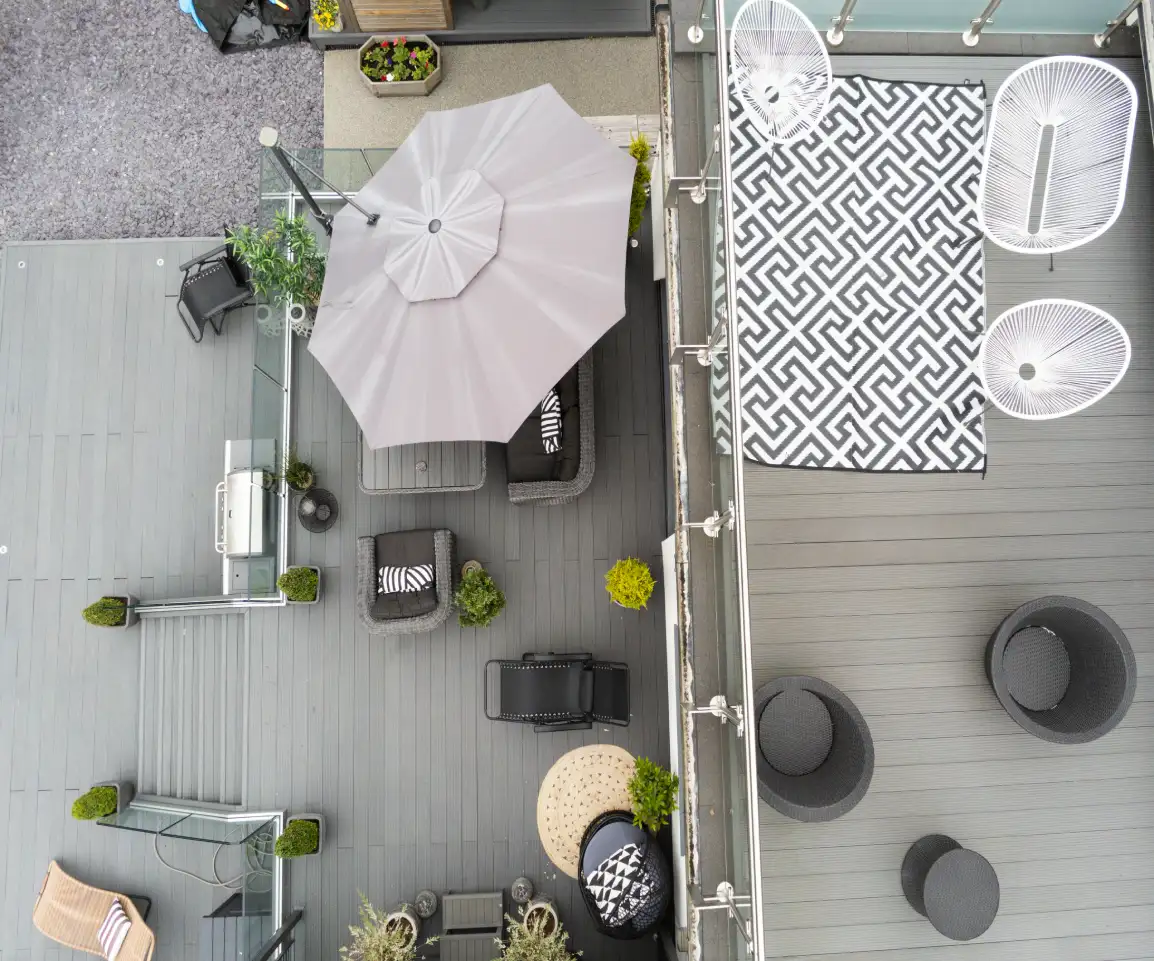
Beautiful Terraced Garden
Incorporating gardens with your decking can prove to be a challenge in sloping locations. In most cases, it’s hard and tricky to plant on steep slopes. One way around it is by building beautiful terraced gardens. You can create tiered plant boxes along with the steps of the decking.
Terrace gardening allows you to create sections of gardens. You can include different varieties of plants at each level or tier.
Not only does it provide homeowners with gardening space, but terraced gardens can also prevent soil erosion. Since terraced gardening divides the slope into smaller and more manageable sections, water absorption and distribution for the soil are improved. This could be beneficial for the decking.
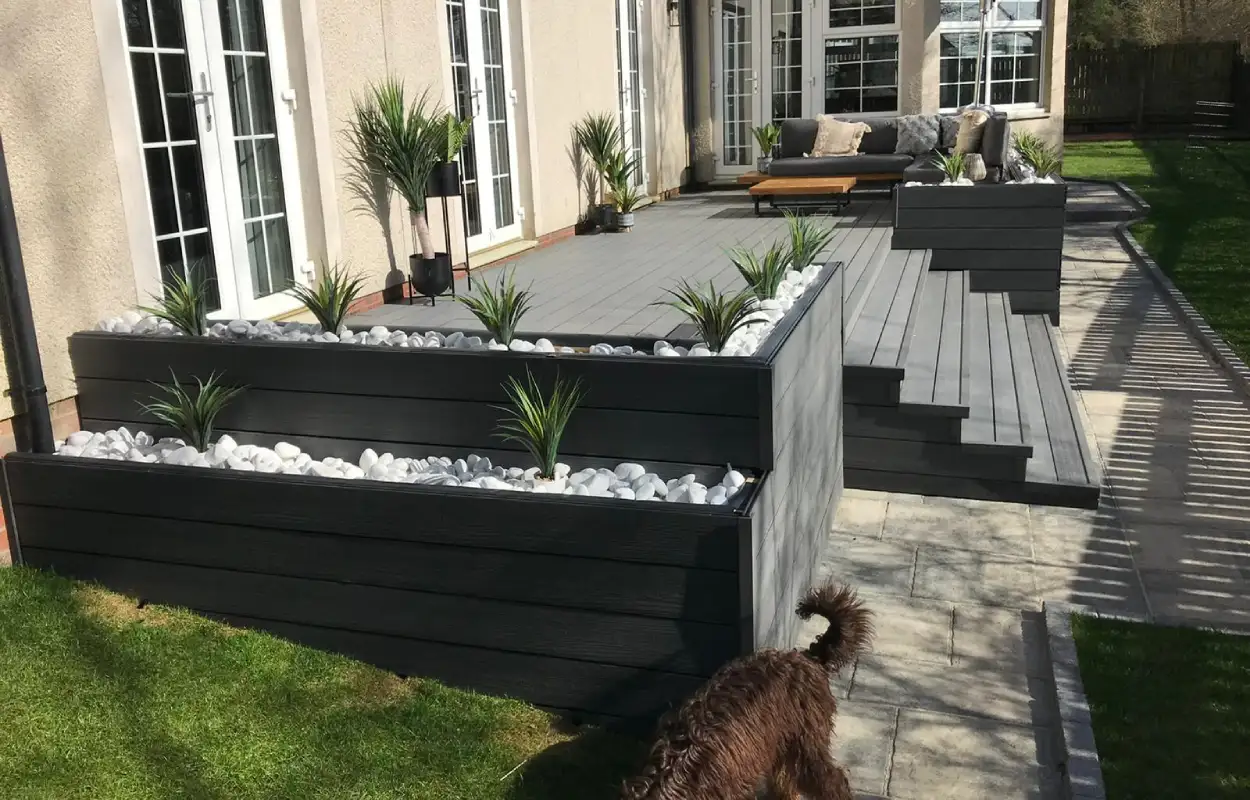
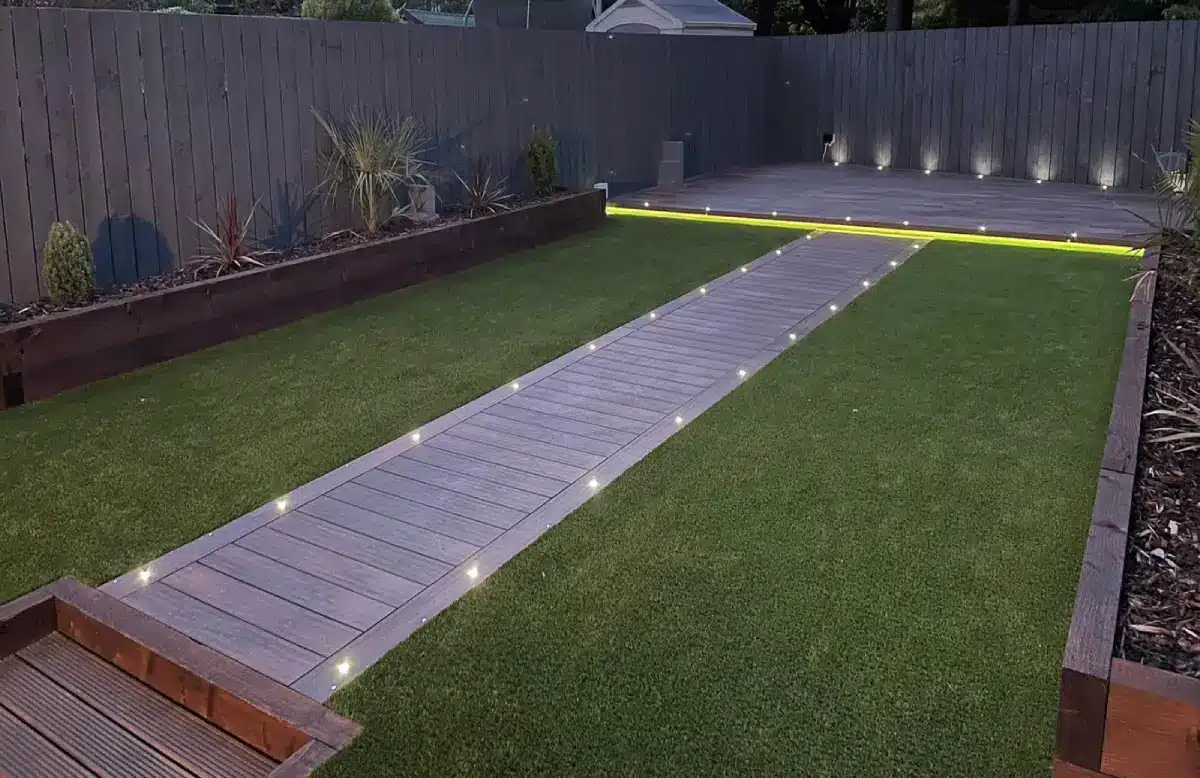
Build a Decking Pathway
Creating a garden of plants with a decking pathway is a good decking idea for a sloping garden. Choose a durable decking type such as composite which is resistant to insects and the elements. It will not rot or absorb water.
A composite pathway will create easy access to different areas of your garden and prevent grass from growing over the path. Choose a decking colour that will match the rest of your garden design.
Try a New Decking Shape
You can try new designs for your garden decking instead of sticking to a particular decking design. Rather than make your decking rectangular or square-shaped, you can choose a curved edge for your decking. A curved edge is a good decking idea for sloping gardens.
N.B. Specialist equipment may be required to create a curved edge from composite boards.
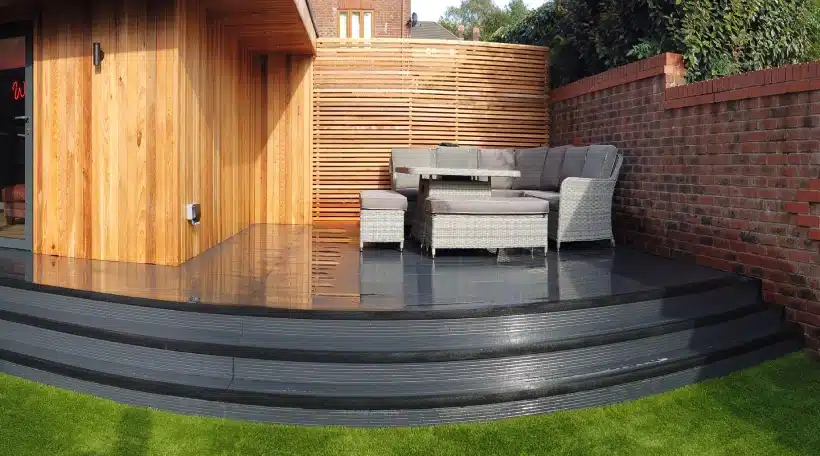
Things to Remember When Making Decking Ideas for Sloping Garden
Choosing the right materials for hillside and sloped decking is crucial. For elevated decking, you can use traditional wood decking boards. However, you will have to make sure the posts are high-quality. But for tiered or multi-level decking, ground contact is unavoidable. For this reason, you will want to use materials resistant to moisture, moulds, mildew, and insects. If you plan to use wood, you will have to go with hardwood or pressure treated wood.
Alternatively, you can use synthetic materials for your decking. PVC decking boards offer durability and resistance to common wood issues. Another excellent option is composite decking boards. Composites have high resistance to weather and warping. Unlike PVC, they also look similar to wood.
Planning permission is another concern for many homeowners. When building slopes on decking, you may or may not need planning permission. If the decking is adjacent to the house, does not exceed 30cm in height, does not affect neighbours’ privacy, and does not occupy 50% of the garden space along with other structures, you won’t likely need permission. However, it’s best to contact your local planning department for more details regarding this matter.
Can You Put a Sealer on Composite Decking



